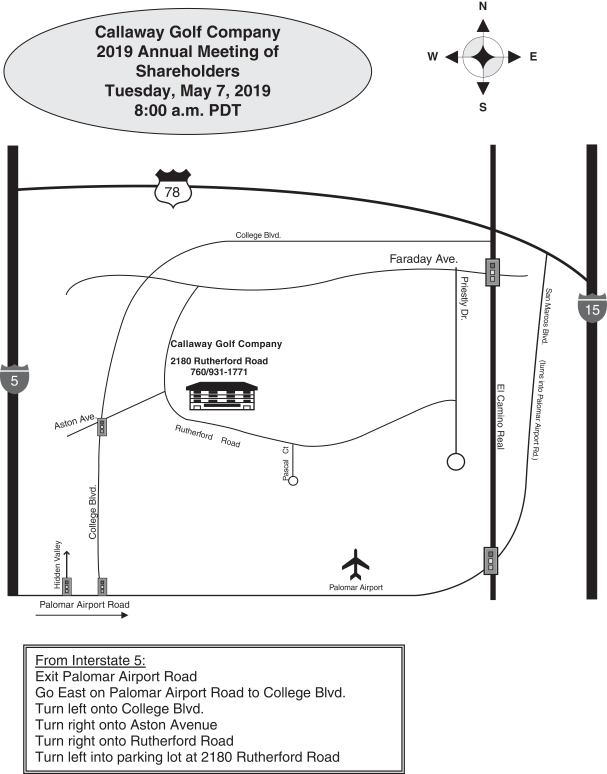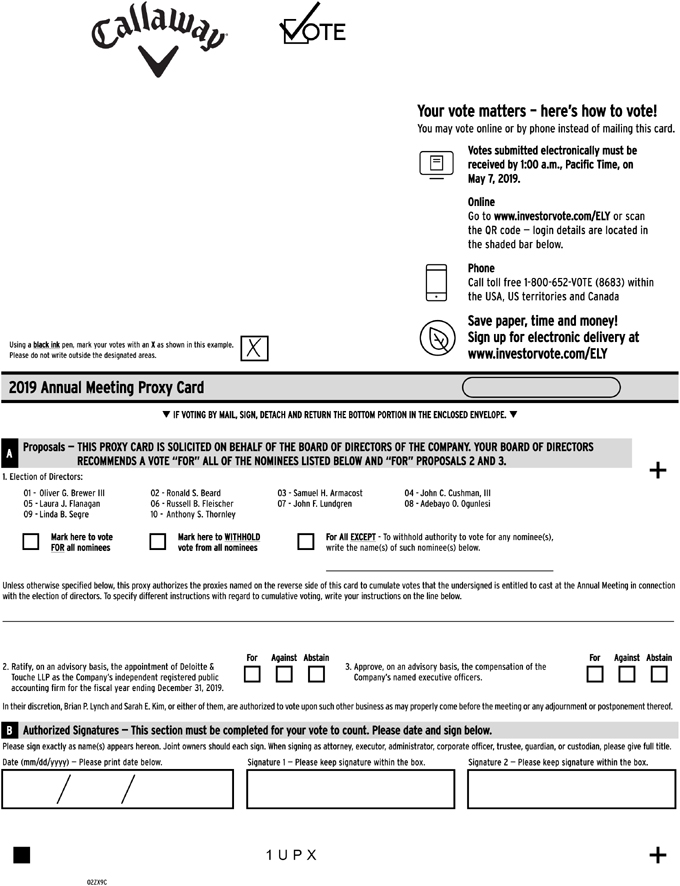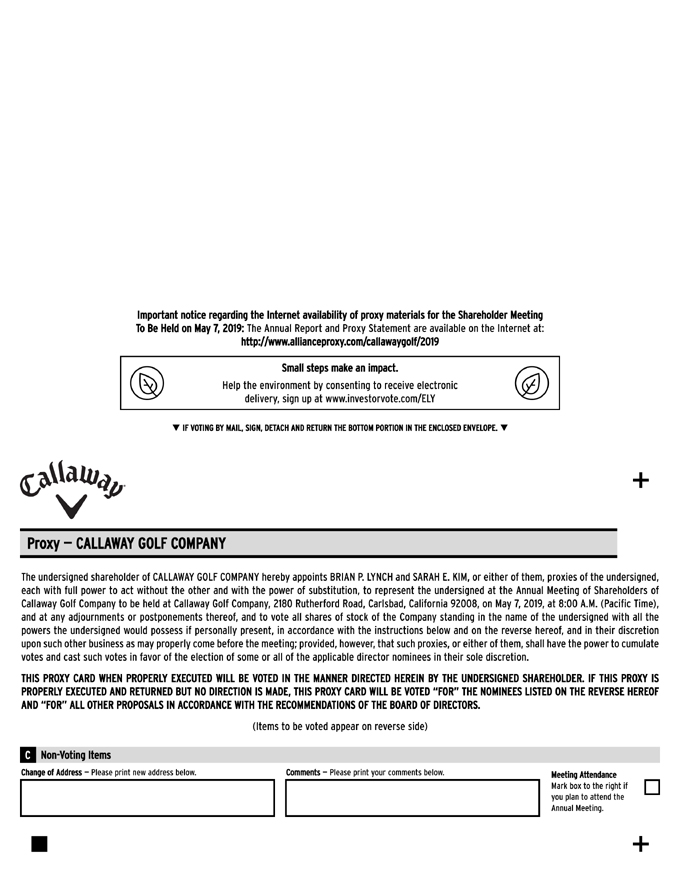
March 18, 201926, 2020
Dear Shareholders:
You are cordially invited to attend the Annual Meeting of Shareholders of Callaway Golf Company, which will be held on Tuesday, May 7, 2019,12, 2020, at our offices located at 2180 Rutherford Road, Carlsbad, California 92008, commencing at 8:00 a.m. (Pacific Time). A map is provided on the back page of these materials for your reference. Your Board of Directors and management look forward to greeting personally those shareholders who attend.
At the meeting, your Board of Directors will ask shareholders to (i) elect ten directors; (ii) ratify, on an advisory basis, the appointment of Deloitte & Touche LLP as our independent registered public accounting firm for the fiscal year ending December 31, 2019; and2020; (iii) approve, on an advisory basis, the compensation of our named executive officers.officers; and (iv) approve an amendment to the Certificate of Incorporation to eliminate cumulative voting in the election of directors. These matters are described more fully in the accompanying Proxy Statement, which you are urged to read thoroughly. Your Board of Directors recommends a vote “FOR” each of the director nominees, “FOR” ratification of the appointment of our independent registered public accounting firm, and “FOR” the approval of the compensation of our named executive officers.officers and “FOR” the amendment to the Certificate of Incorporation to eliminate cumulative voting in the election of directors.
We have elected to take advantage of Securities and Exchange Commission rules that allow companies to furnish proxy materials to their shareholders by providing notice of and access to these documents on the Internet instead of mailing printed copies. Those rules allow a company to provide its shareholders with the information they need, while lowering the costs of delivery and reducing the environmental impact of the annual meeting. Most of our shareholders will not receive printed copies of our proxy materials unless requested, but instead will receive a notice with instructions on how they may access and review our proxy materials on the Internet and how they may cast their vote via the Internet. If you would like to receive a printed ore-mail copy of our proxy materials, please follow the instructions for requesting the materials in the Notice of Internet Availability that is being sent to you.
Your vote is important. Whether or not you plan to attend the annual meeting, please vote as soon as possible. If you received the Notice of Internet Availability, a proxy card was not sent to you and you may vote only via the Internet unless you attend the annual meeting or request that a proxy card and proxy materials be mailed to you. If you have requested that a proxy card and proxy materials be mailed to you, and you have received those materials, then you may vote via the Internet, by telephone or by mailing a completed proxy card. For specific voting instructions, please refer to the information provided in the accompanying Proxy Statement and in the Notice of Internet Availability.
Thank you for your continued interest in and support of Callaway Golf Company.
Sincerely,

Oliver G. (Chip) Brewer III
President and Chief Executive Officer






